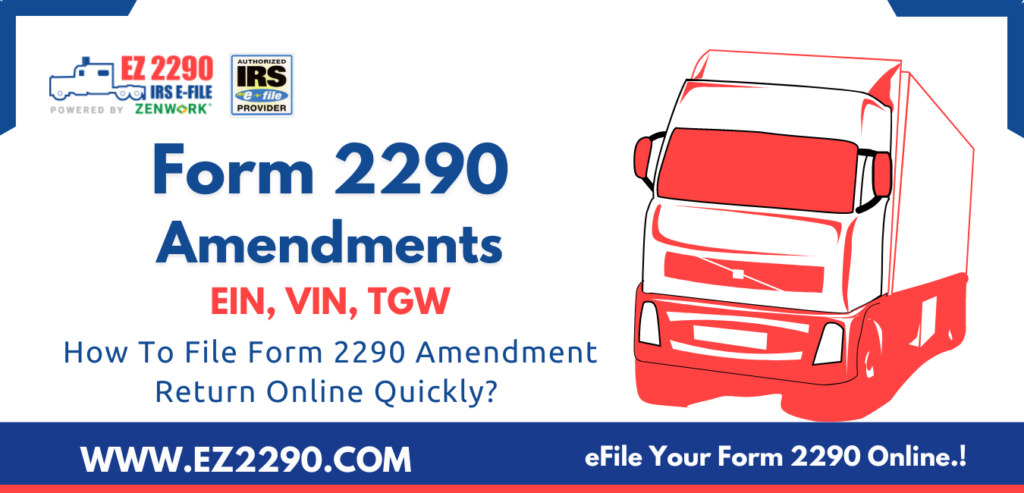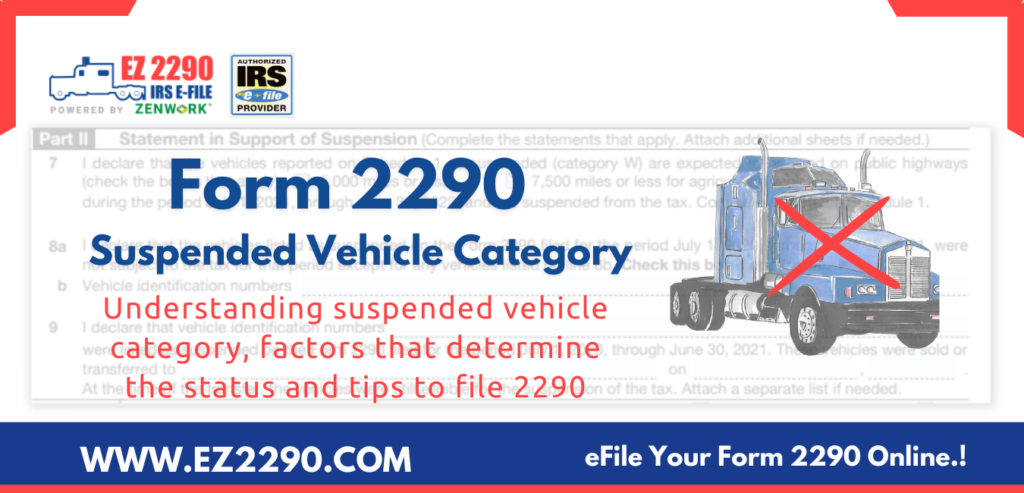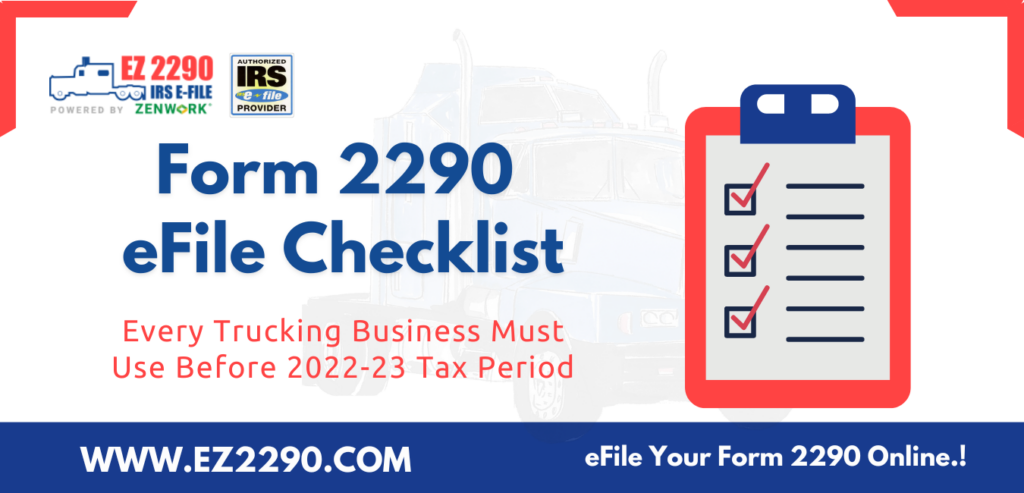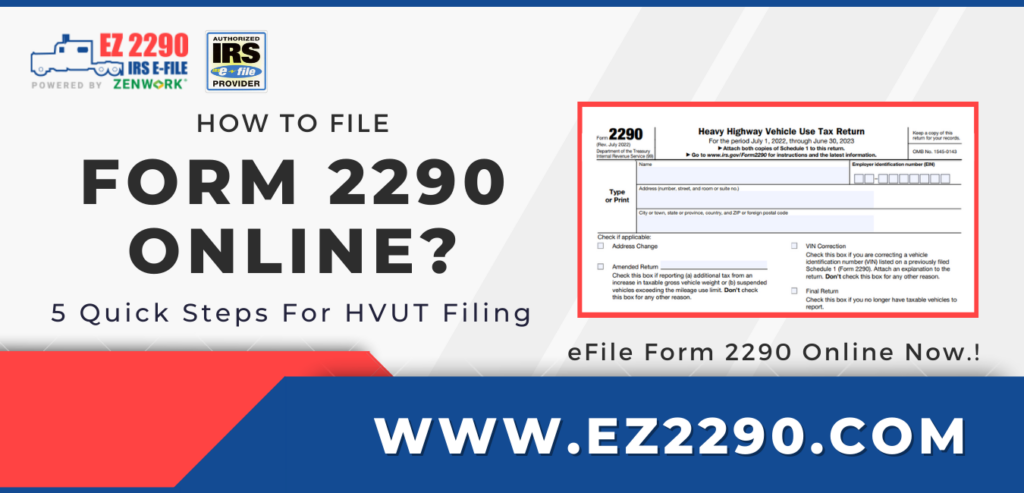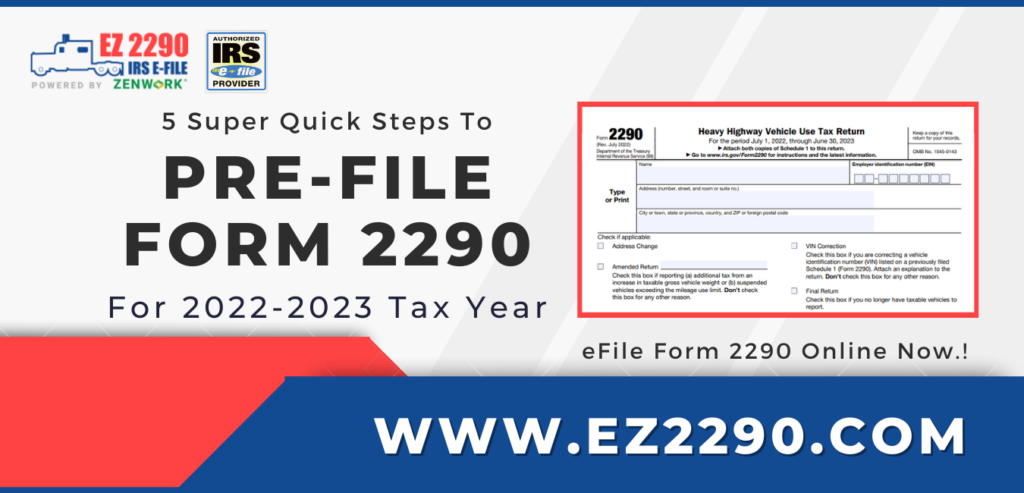
It’s that time of the year again! The 2290 tax filing season is almost upon us.

In case you forgot, the due date for filing your Heavy Vehicle Use Taxes (HVUT) is August 31. This leaves you with just a little over two months to get your documents in place and buckle up for filing 2290 forms for your heavy motor vehicles.
We know that filing taxes can be taxing (pun intended) at times, and that’s why we want you to avoid any last-minute hiccups. When it comes to taxes, the sooner the better. This article will discuss the benefits of pre-filing your Form 2290 and the steps to pre-file 2290 forms.
Why do you need to file Form 2290?
Form 2290 or the HVUT is a type of tax levied on heavy motor vehicles with a registered gross weight of 55,000 pounds or more that operate on public highways. This tax is a critical component for maintaining the nation’s infrastructure, and understanding its purpose is essential for complying with the federal regulations.
You must file Form 2290 and pay the federal excise tax on your heavy motor vehicle if it has a taxable gross weight of 55,000 pounds or more and is driven on public highways for 5,000 miles (7,500 miles for agricultural vehicles) or more.
What is the due date for filing Form 2290?
The due date for filing your Form 2290 depends on the first month when you used your taxable vehicle. The current tax period for heavy highway vehicles begins on July 1, 2024, and ends on June 30, 2025. So, if your vehicle has been on the road since July 2024, the due date for filing Form 2290 will be August 31.
Why Pre-File Form 2290?
Managing taxes is a critical part of any trade, and the same holds true for the trucking business. Due to the nature of this work, it is essential that your trucks are in working order and meet all the compliance requirements for them to hit the road. Missing even a single trip can impact your business considerably, so pre-filing your Form 2290 will leave you with one less thing to worry about.
Benefits of Pre-filing
Here are some of the benefits of pre-filing your Form 2290 with EZ2290:
1. Avoid the last-minute rush: People face delays in filing their taxes due to the last-minute rush. This may lead to errors and penalties for missed deadlines. Pre-filing your Form 2290 ensures you take enough time to complete the form correctly and avoid any deadline rush.
2. More Time for Corrections: Facing a rejection just before the deadline can put you in a tight spot. Pre-filing your Form 2290 gives you enough time to make amendments or fix any errors post-rejection.
3. Avoid Penalties: Missing the deadline can invite hefty penalties for late filing or non-compliance. These fines can add to significant costs over time, which is bad for the business.
4. Get your Schedule 1 faster: Pre-filing can help expedite the processing time of your Form 2290, which means you’ll receive your stamped Schedule 1 sooner. Schedule 1 is important for registration of new vehicles and renewal of registrations.
5. Free VIN correction: If you make a mistake in your VIN, EZ2290 will help you make amendments to your form. EZ2290 offers free VIN corrections for filers that have previously used EZ2290 to submit 2290 returns with the IRS. Additionally, we also provide free re-files for rejected returns.
6. Ready Return for Form 2290: Form 2290’s Ready Return automatically generates your current year’s form using the previous year’s information, saving you the time and hassle of re-entering all the details.
7. Copy Return for Form 2290: Copy Return saves you time and ensures accuracy by automatically populating your previous year’s Form 2290 data into the current year’s form.
How to Pre-File Form 2290 with EZ2290?
Here are the steps for pre-filing your form 2290 with EZ2290:
Step 1. Register on EZ2290 and create your account at no cost.
Step 2. Select the form you wish to pre-file, such as the HVUT Form 2290.
Step 3. Enter the required information for the form, including vehicle details and tax payment information.
Step 4. Review the information to ensure accuracy.
Step 5. Submit the form for pre-filing.
 1-877-811-ETAX
1-877-811-ETAX
